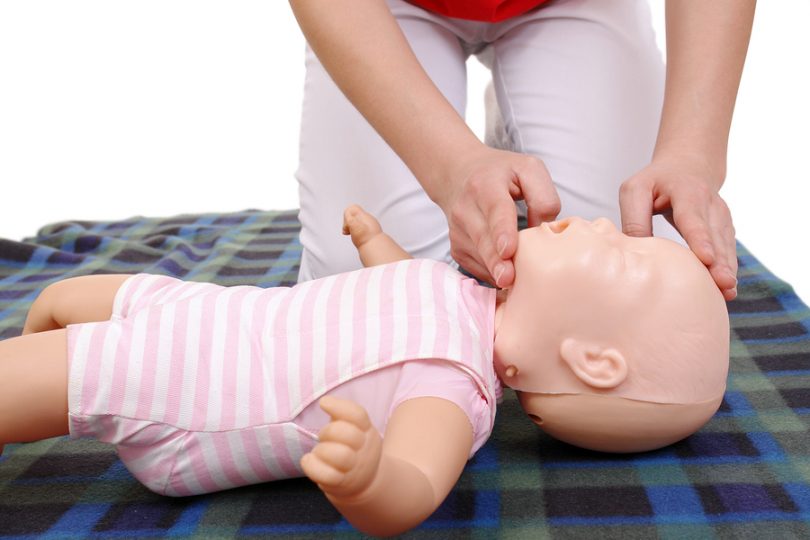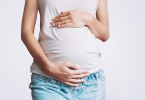You can do it.
It’s a phrase that’s commonly overused, but at no time is it more true than here.
“New parents may be nervous about performing infant CPR on their child, but parents can do this,” said Wayne Deas, the American Heart Association Training Center Coordinator/Manager at Augusta University Medical Center.
But reading about infant CPR is one thing. Seeing it and practicing it, even in a mock setting, is another.
“We encourage all parents and caregivers to take an infant and child CPR class, many of which are offered free,” said Deas. “Thousands of studies have shown that an educated provider gives far better quality CPR than someone who is not. Taking a class gives parents the opportunity to learn from experts and practice those skills, before they ever need to use them.”
The reason why
No parent wants to think about this, but choking is one of the leading causes of unintentional death for children under 3.
Don’t get too paranoid, but the risks are literally everywhere. The most common choking hazards include latex balloons, coins, marbles or small balls, pen or marker caps, earrings, button batteries, safety pins, buttons, bottle caps, toys with small parts and even holiday decorations.
As children learn to eat solids, certain foods should be avoided until children fully master eating—or until teeth come in. These include hot dogs, dried fruit and nuts, cheese cubes, whole grapes, raw vegetables, candy, popcorn and even sticky peanut butter.
Finally, drowning is another risk. Infants can drown in less than two inches of water, so always supervise children in the bath, never leave toilet lids up, and put away mop buckets as soon as chores are done.
Here’s what you should know
During class, a trained expert will walk parents through how infant CPR works and provide handouts. Then, parents have the opportunity to practice skills—again and again—on a plastic model.
The class will provide a lot of detailed information, but here are a few key things to remember:
1) Use the 30:2 rule. Whether it’s infants or adults, it’s recommended that CPR involves 30 compressions followed by two breaths, over and over again until breathing begins again or help arrives. In infants, press two fingers in the center of the chest along the nipple line. For children ages 1 to 8, use a single hand to press.
2) Never shake your baby if he or she is unresponsive. Shaking a baby doesn’t help and could lead to further injury. If your child is limp and not breathing, the first step is to quickly check for responsiveness by tapping their feet and to feel for a pulse by pressing the inner upper arm, just above the elbow (this is called the brachial pulse). A response is a cry, movement or even seeing the chest moving up and down normally and nostrils flaring, indicating breathing.
3) Start CPR if there is no pulse, no breathing and the baby is not responsive. “The most important thing is oxygenation,” said Deas. If someone else is available, have them call 911 while you start CPR. But if you are alone, perform five sets of 30 compressions and two breaths, then call 911. In the age of hands-free dialing, you may be able to do both, but if your child is unresponsive and you are alone, remember that the most important task is to first support life by providing oxygen through CPR, then calling 911.
4) Never do a blind finger sweep. If your child is choking on an object, a parent’s first instinct may be to feel inside the throat. But don’t. That may only push the object in deeper and make a bad situation worse. You can perform a modified Heimlich maneuver on infants and the traditional Heimlich on children older than 1, both of which are covered in an infant CPR class. If the Heimlich isn’t working and your child becomes unconscious, begin CPR immediately, and look for the object every time you deliver a rescue breath. If you can see it, take it out.
5) If you can’t feel a pulse, your child is not breathing and an AED is available, use it. This will likely be the scariest moment of your life, but could save your child. Remember that even if pediatric pads are not available, you can use adult pads on a child—just place one on the chest and one on the back. Follow all instructions carefully on the AED. Also remember that some AEDs are only designed for one-time use, so the device may need to be discarded once used; read the instructions to make sure.
Know this too: Even if you are still afraid of the idea of performing infant CPR or these other life-saving measures on your child, that’s OK. “These actually are the best candidates,” said Deas. “These are the parents who need to come to a class and, yes, they will gain confidence by doing it.”
“This is one thing that every single parent absolutely needs to do.”




